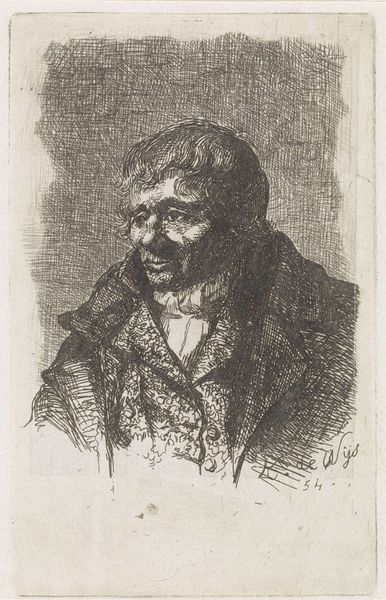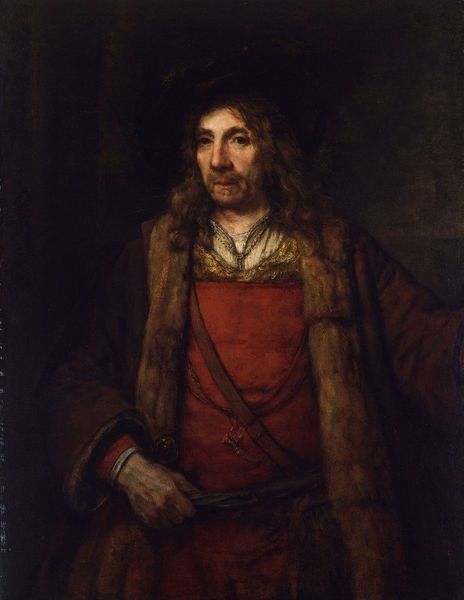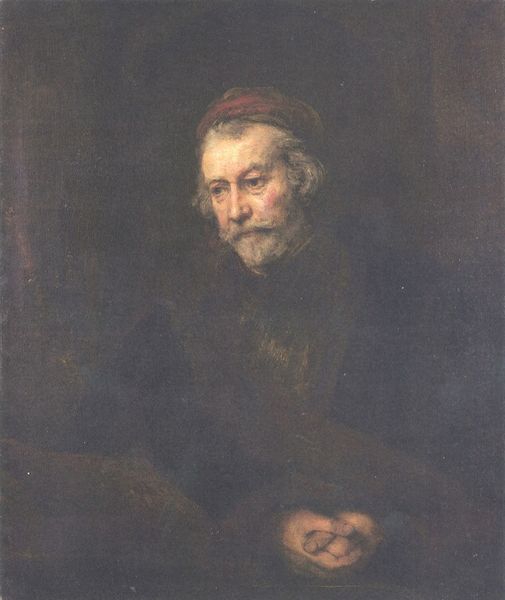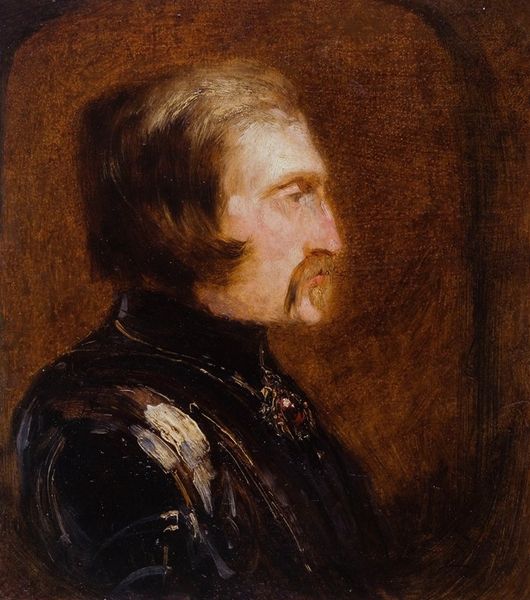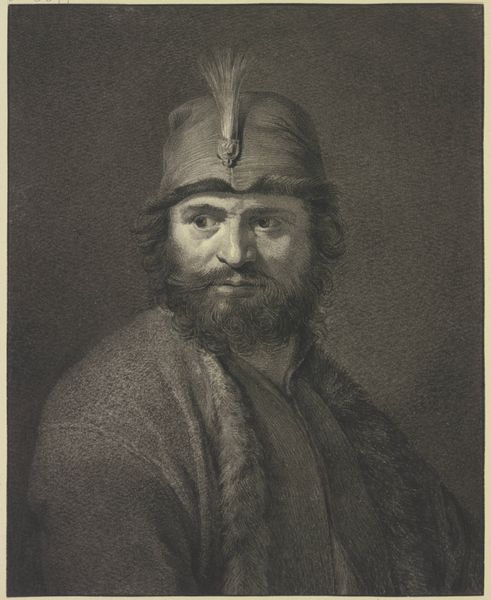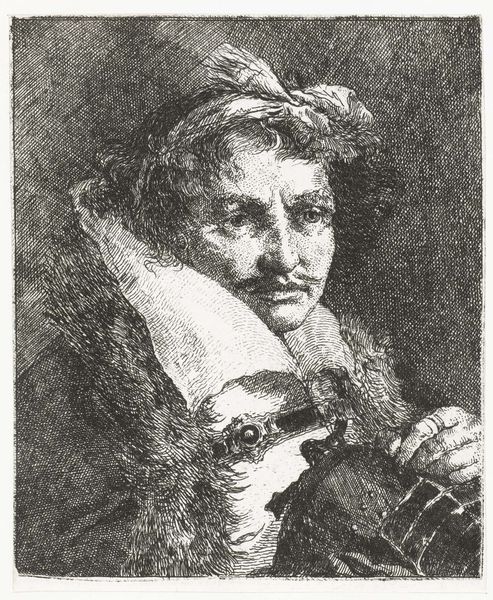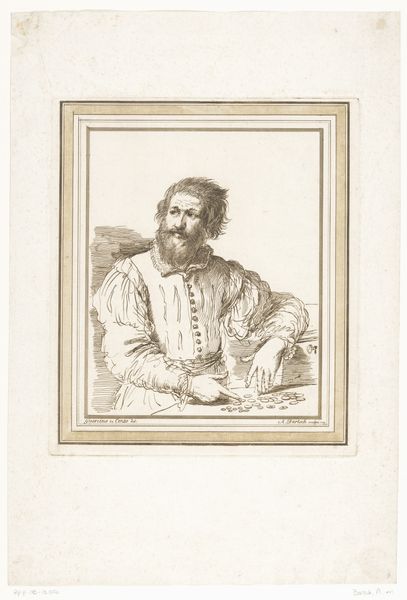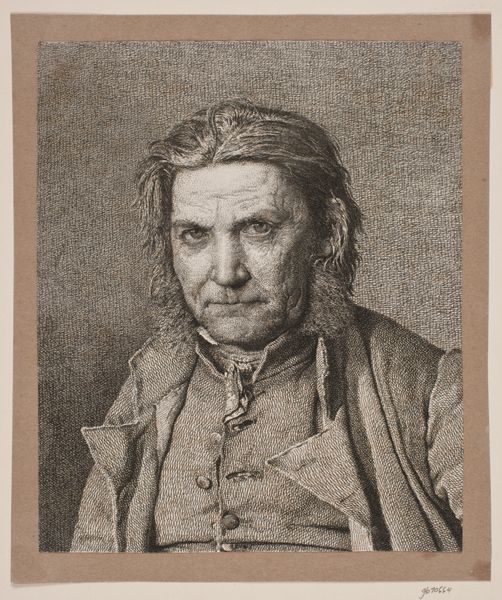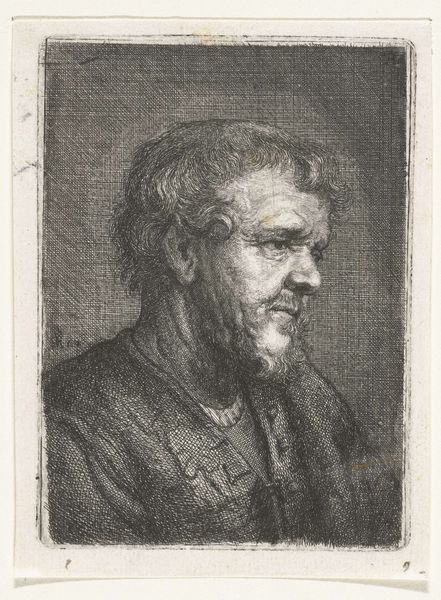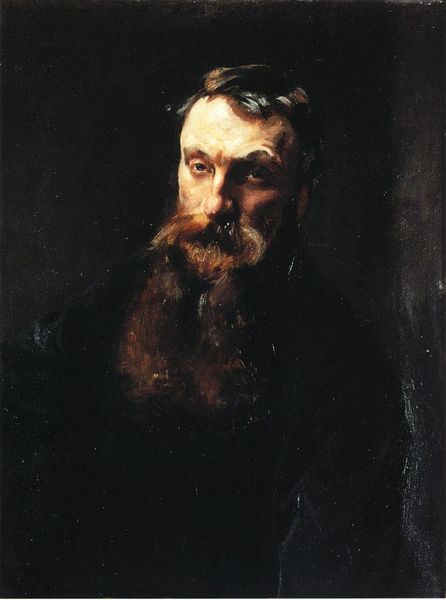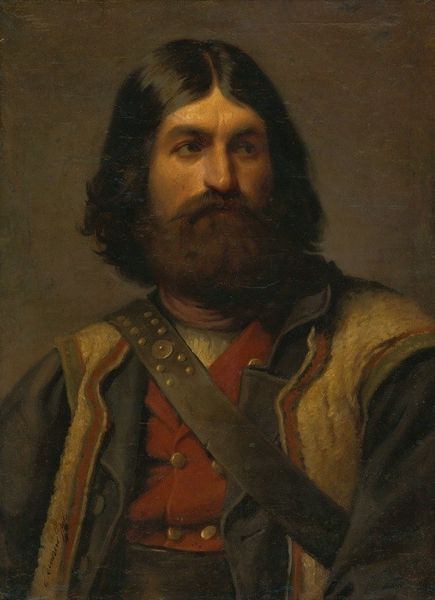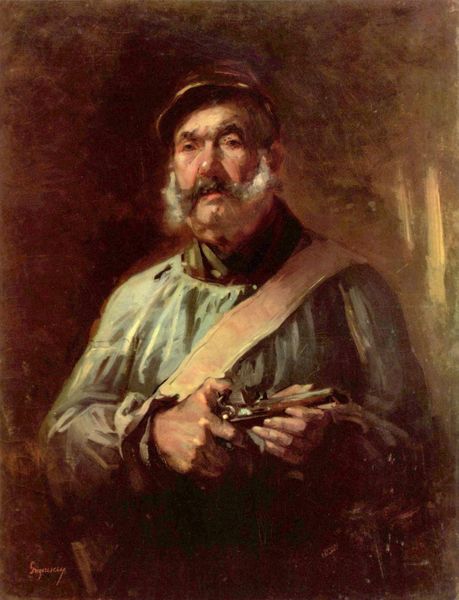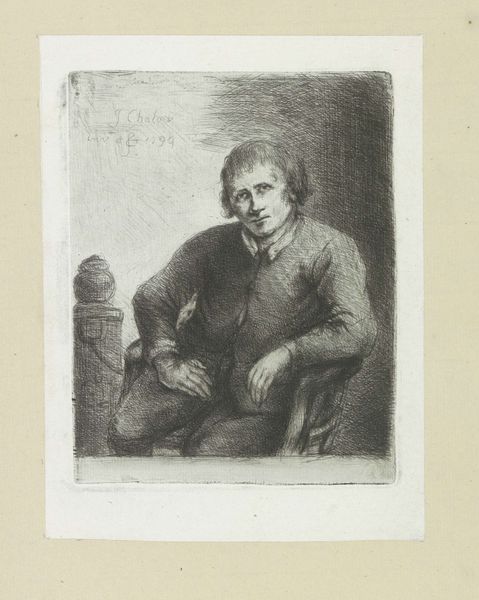
Copyright: Public domain
Curator: What a somber piece. It feels like a quiet contemplation. Editor: That's a great start. This is "Portrait of Artist Alexander Popov" by Konstantin Egorovich Makovsky, painted in 1863. A powerful example of portraiture in oil paint. Curator: The use of oil is critical here; you can see the build-up of layers. Look closely at the fur collar; the way it's rendered creates depth. I'm wondering where Makovsky sourced his materials – was it locally or imported? Access to pigment certainly affected an artist’s work. Editor: Absolutely. The sourcing impacts the image, and the image impacts viewers. Beyond that materiality, think of this piece in its historical moment: mid-19th century Russia, a time of great social and artistic upheaval. Consider the rise of realism as a rejection of academic idealism. Curator: And consider how the romantic notion of the artist influenced that "rejection". Popov isn't posed heroically; his humanity and almost stern gaze create a mood of authenticity, I want to consider what that scarf is made from and who crafted it; were their socio-economic restraints? Editor: A very valid point. Think too about the institutional frameworks that would support a work like this, commissions and sales being driven by emerging tastes in art, with portraits of prominent figures enhancing that visibility. Curator: Agreed. It's interesting how art's perceived function, portraiture as representation, affected not just patronage, but material availability. Is Popov deliberately confronting that "high society"? I am still considering his jacket. It looks like shearling which makes me think that they maybe had more than what some might have. Editor: He seems very self-possessed. Perhaps this portrait aimed at solidifying Popov’s place within those circles, maybe. Curator: So, it isn't merely representational, is it? Editor: Of course not. It’s a dialogue, with society, with art history, and with us. Curator: Exactly, and as the curator, I consider art objects by means of how they represent material labor in those complex relations! The canvas, paints, brushes: tools utilized, made and possibly re-made, through strenuous toil in hopes to one day, be represented, re-organized and maybe reorganized once again. It is the perfect work. Editor: An echo we continue to experience today as new historical dialogues appear through these mediums.
Comments
No comments
Be the first to comment and join the conversation on the ultimate creative platform.
